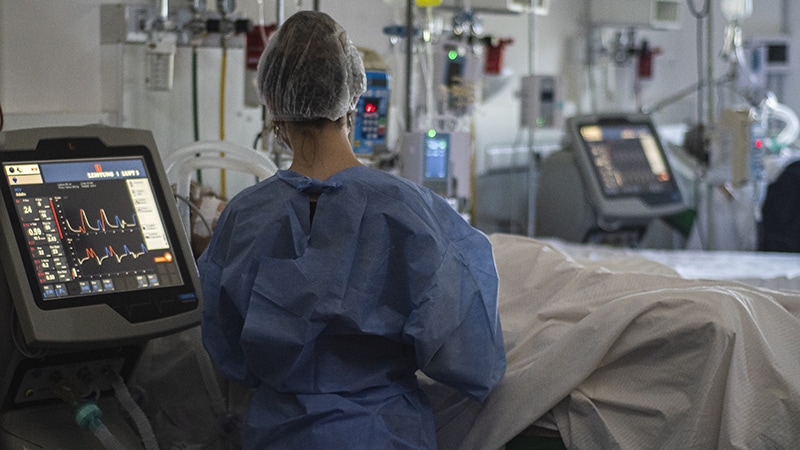The study covered in this summary was published in papers.ssrn.com as a preprint and has not yet been peer reviewed.
Key Takeaways
-
Overall in-hospital mortality for patients with sepsis-induced cardiomyopathy (SIC) trended higher, short of significance, than for patients with sepsis but no related cardiomyopathy in a meta-analysis of studies and systematic review of the literature.
-
But in-hospital mortality for patients with SIC from 10 days after hospitalization to 1 month was significantly increased, as was 1-month mortality.
-
One-month mortality in patients with SIC was more strongly associated with right ventricular (RV) dysfunction than with left ventricular (LV) dysfunction.
Why This Matters
-
The meta-analysis of studies clarifying prognosis after SIC at different hospitalization intervals suggests that the condition can persist as a disease state long after the acute stage, even after discharge, and underscores the importance of extended surveillance and care of such patients.
-
Given the apparent relevance of RV, as well as LV, dysfunction to prognosis in patients with SIC, assessment of bilateral cardiac function is vital to management.
Study Design
-
The authors performed a meta-analysis and provide a systematic review of English-language reports published up to July 2021 and catalogued in Embase and PubMed for which mortality in patients with SIC, as opposed to other issues, such as cardiac function, was a main focus.
-
Protocol publications, conference abstracts, reports primarily in pediatrics or obstetrics, and preclinical studies were excluded.
-
Relationships between SIC and mortality risk were explored, and the mortality impact of ventricular dysfunction was compared in patients with SIC and in those who were septic without related cardiomyopathy.
-
In-hospital mortality was divided into early- and late-acute stages, with the dividing point at 10 days, to account for variation in hospital length of stay across citations.
-
The mortality impact of RV and LV dysfunction in patients with SIC was examined in a subanalysis.
Key Results
-
Twenty full-text articles comprising 4410 septic patients were included. Mean patient age across the different reports ranged from 39 to 77 years.
-
In-hospital mortality was 26.0% in the SIC group and 25.3% in the septic non-SIC group; the difference was nonsignificant (P = .09).
-
Among septic patients hospitalized for more than 10 days, mortality risk was higher in those with than without SIC (relative risk [RR], 1.40; 95% CI, 1.02 – 1.93; P = .04).
-
Those with SIC showed no significant increase in mortality risk in the 10 days after admission (RR, 0.87; 95% CI, 0.67 – 1.11; P = .26).
-
One-month mortality was significantly higher in patients with than without SIC (34.9% vs 23.0%; RR, 1.44; 95% CI, 1.08 – 1.92; P = .01).
-
Patients with SIC and RV dysfunction showed a significantly increased 1-month mortality risk (RR, 1.74; 95% CI, 1.37 – 2.21; P = .001), but that was not true for such patients with LV dysfunction (RR, 1.26; 95% CI, 0.92 – 1.71; P = .14).
Limitations
-
The length of hospital stay was variable across reports, which could have confounded the results.
-
Variable severities of sepsis and the range of selection criteria for patients with sepsis across the different reports made for heterogeneity in outcomes.
Disclosures
-
The study received no commercial funding.
-
None of the authors disclosed relevant financial relationships.
This is a summary of a preprint research study, Association of Sepsis-Induced Cardiomyopathy and Mortality: A Systematic Review and Meta-Analysis, written by researchers at the Chi Mei Medical Center, Tainan, Taiwan, and the University of Leuven, Belgium, on Preprints with the Lancet provided to you by Medscape. This study has not yet been peer reviewed. The full text of the study can be found on papers.ssrn.com.
Source: Read Full Article






